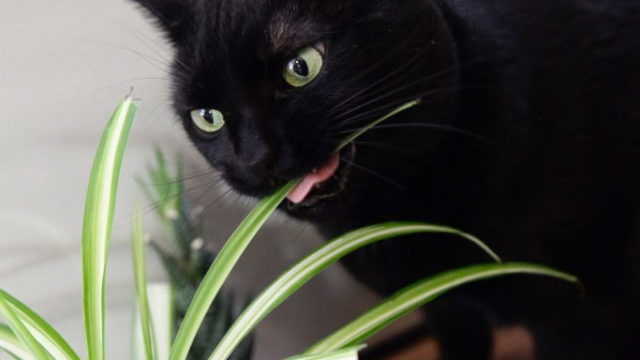
Every pet safe plant list will undoubtedly contain the Spider Plant. And almost every cat owner brings a shiny new spider plant home, only to find it obliterated in minutes, eaten to the nub, grassy vomit littering the floor hours later.

I want to talk about spider plants not as a way to drive the “they’re pet safe!” noise home, but because I’m positive every cat owner, desperate to bring green into their home, buys one. Sure, spider plants are considered a safe indoor plant to own, but at what cost? I love them but I was tired of my new plant being annihilated and stepping in regurgitated plant puddles at 3am, so let’s talk about them a bit.
What Are Spider Plants?
The spider plant (Chlorophytum comosum) has been a favorite houseplant for what seems like forever, and that’s because they’re just an easy plant. Not very fussy, they’re happy in mid to high light levels and don’t really care about humidity. There are only two varieties that I know of, the variegated white and green and the 95% green kinds (the white/green is most common). Spider plants are common in most garden centers or florist shops since they are crazy cheap and easy to propagate.
Are Spider Plants Toxic to Cats?
Before you shake your head no and leave this page, let’s talk about this. By typical plant toxicity standards, spider plants are safe and non toxic to cats and dogs. However, like a lot of other non toxic plants, they should not be consumed in their entirety, as they typically are by cats. If you’re a cat mom, this isn’t foreign to you. Spider plants, palms, cat grass, dracaena – all of these similar stringy plants call to your cat. They just beckon to be munched and half-digested. Cats just really like skinny-leafed plants for some reason. Legend says it’s because cats naturally graze on grass outdoors and these stringy plants look like, well, grass.
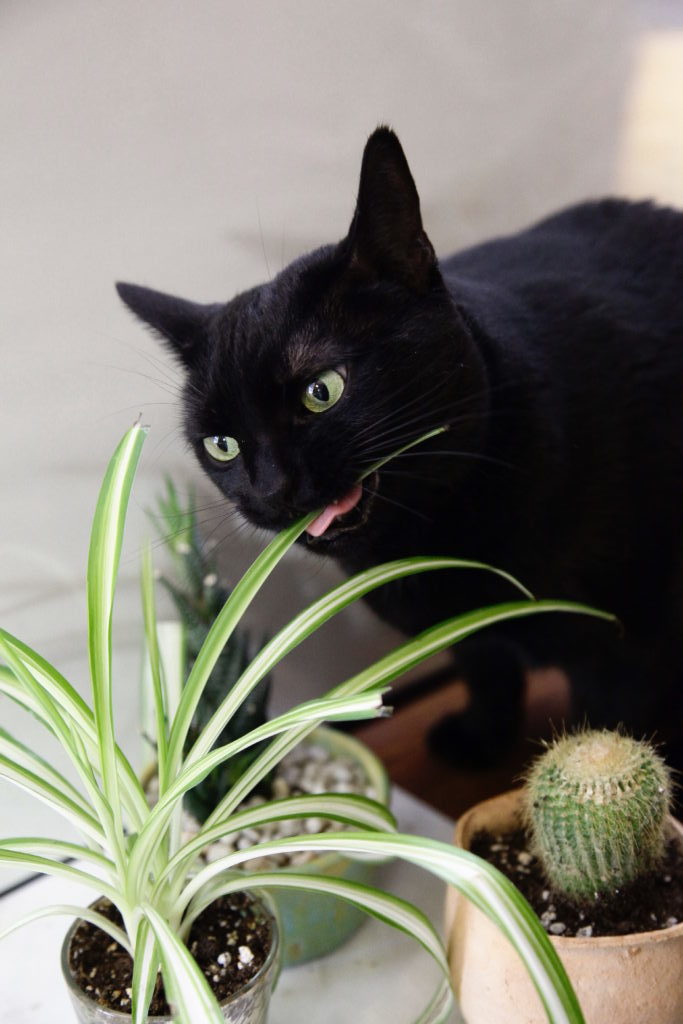
This grass-like quality of spider plants may be one of the reasons cats fancy them, but they also contain a similar chemical to catnip. As you probably know, dried grassy catnip puts Mittens on a hallucinogenic high, making them think the floor is lava and you are a giant fish, probably. I even read that this chemical is similar in makeup and effects to opium. Oof.
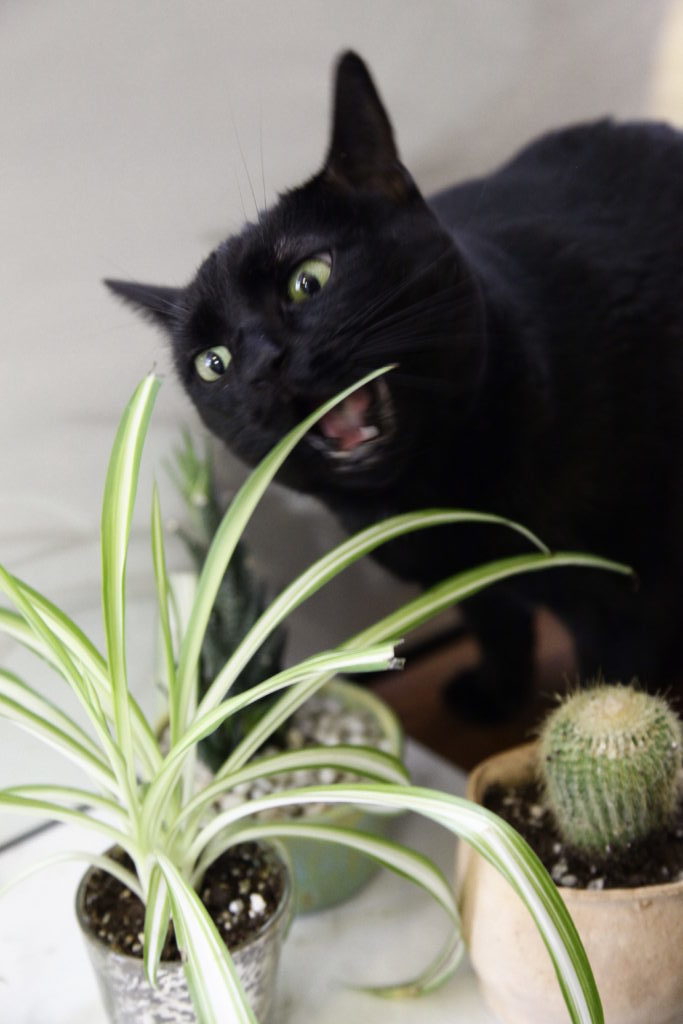
Cats love the catnip high, like a lot, and catnip is safe, right? Well, it is, but really only in small amounts. One of the reasons spider plants may even be considered “toxic” is that this chemical can effect cats in different ways, much like catnip does. It may give Mittens the runs, cause vomiting, or cause a lethargic crash after the high dissipates. Don’t do drugs, kids.
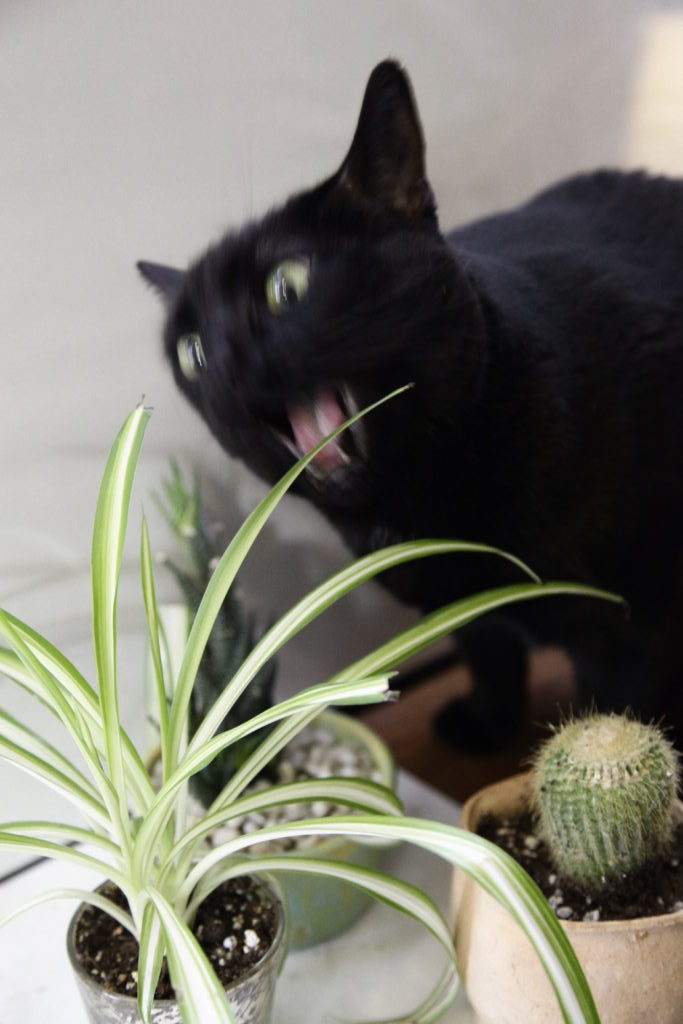
So, spider plants aren’t toxic per se, but they can lead to these unpleasant effects later. At the end of the day, there’s no cause for alarm if cats or dogs nibble on them. If the entire plant is consumed, however, be prepared for intestinal wrath and keeping a diligent eye on Fluffy. Think of it like this: cake as a food isn’t bad for you and it makes you happy, but too much of it can be bad.
Caring for Spider Plants
All of this being said I do have spider plants, but they are kept in the bathroom, and for the most part, out of paw-reach purely because I prefer my plants without bite marks (see below). My spider plant Sophie is a trooper, enduring many a haircut (see below for exhibit A) from Harlequinn during her rebel years.
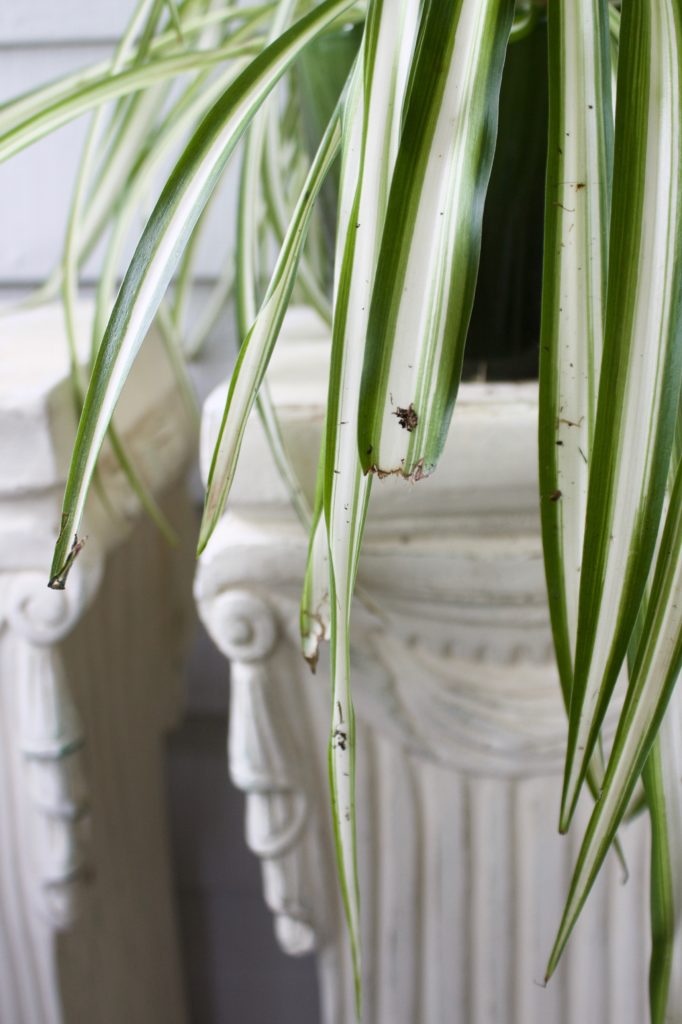
Basic Care
Preferred Home: Plant in a plastic or ceramic planter. These do like to be pot-bound but will destroy the vessel if too bloated, so I repot every year.
Ideal Soil Mix: Basic potting soil with a bit of perlite.
Moisture Level: Water 1-2x a week or when soil is dry. Water less in the winter. Because spider plants grow rapidly, I recommend repotting every 6-8 months.
Sunlight Level: They like bright, indirect light but can tolerate shady spots in the house or florescent office lighting.
Dislikes: Drafts and dry bottoms. Spider plants die brutally and quickly when left without water, so be sure to keep them moist.
Placement: They really don’t care where you put them. I encourage people to put them on shelves since they look pretty cascading from somewhere up high and they make nice macrame plant fillers.
Propagating Spider Plants
As your spider plant matures, you will soon see little “mini-me” plants hanging from the leaves. Although horribly cute, don’t be afraid to snip them off of the mother plant to propagate new ones. It’s really simple and tiny spider plants are adorable.
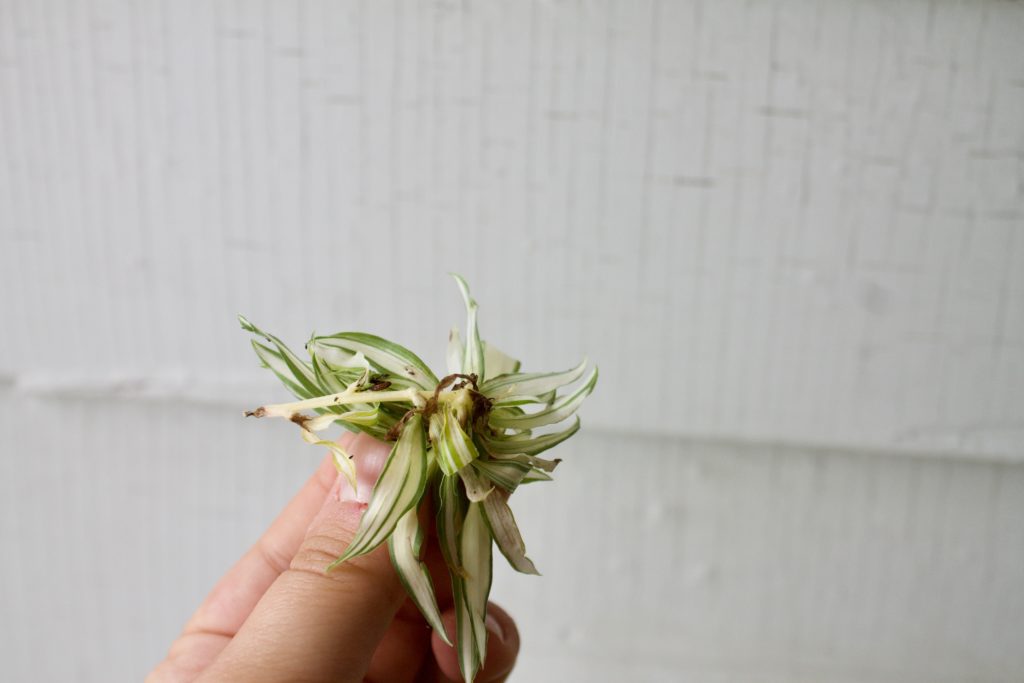
- Snip the mini-me off and place in a jar of clean water to root where the pre-existing roots do not touch the bottom of the jar.
- In about a week or two, those baby roots should begin to grow bigger. I usually leave a plantlet in water for about a month.
- After a month, you can plant in a well-draining potting soil.
- Keep the mini me moist and if more humidity is needed, place the plant in a plastic bag partially open to increase humidity.
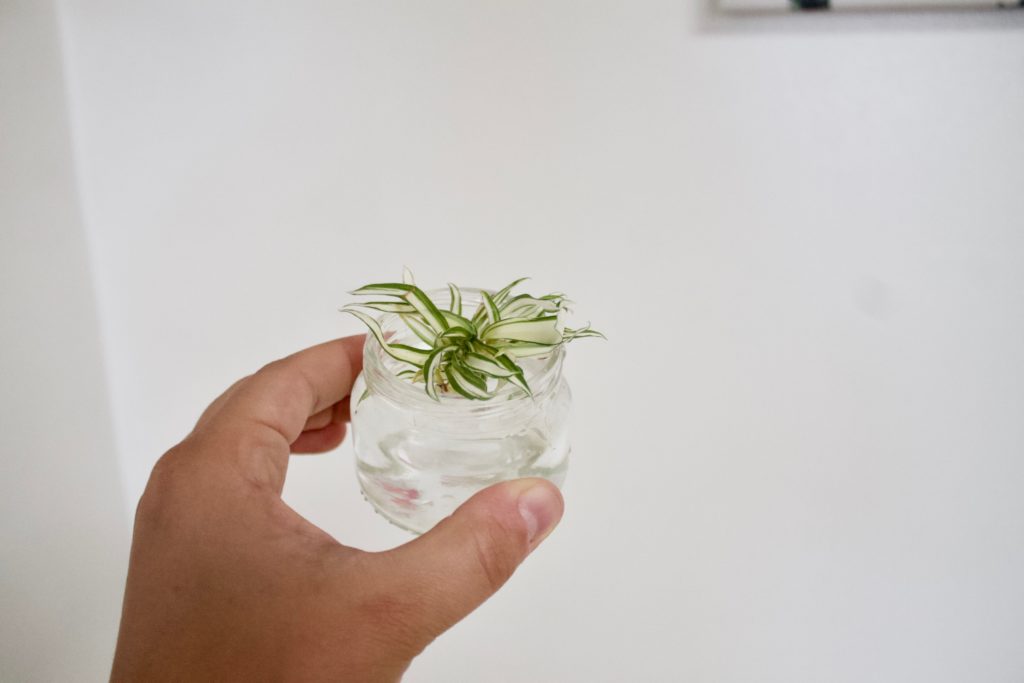
Spider Plant Problems
Brown Leaf Tips: Browning leaf tips on spider plants is inevitable. Although unsightly and annoying, it doesn’t mean anything is wrong with your plant. It’s kind of something that tends to happen, and is harder to control as the plant ages.
Salt Buildup on Soil: With any plant, especially spider plants which like to be pot bound, you may see white-tinged soil on the top. Fluoride in water (which is common in cities), causes this salt buildup. It kind of looks like mold and may actually be a cause dry tips as well. To rid this of your plant, water it throughly with rainwater, making sure any excess water drains out.
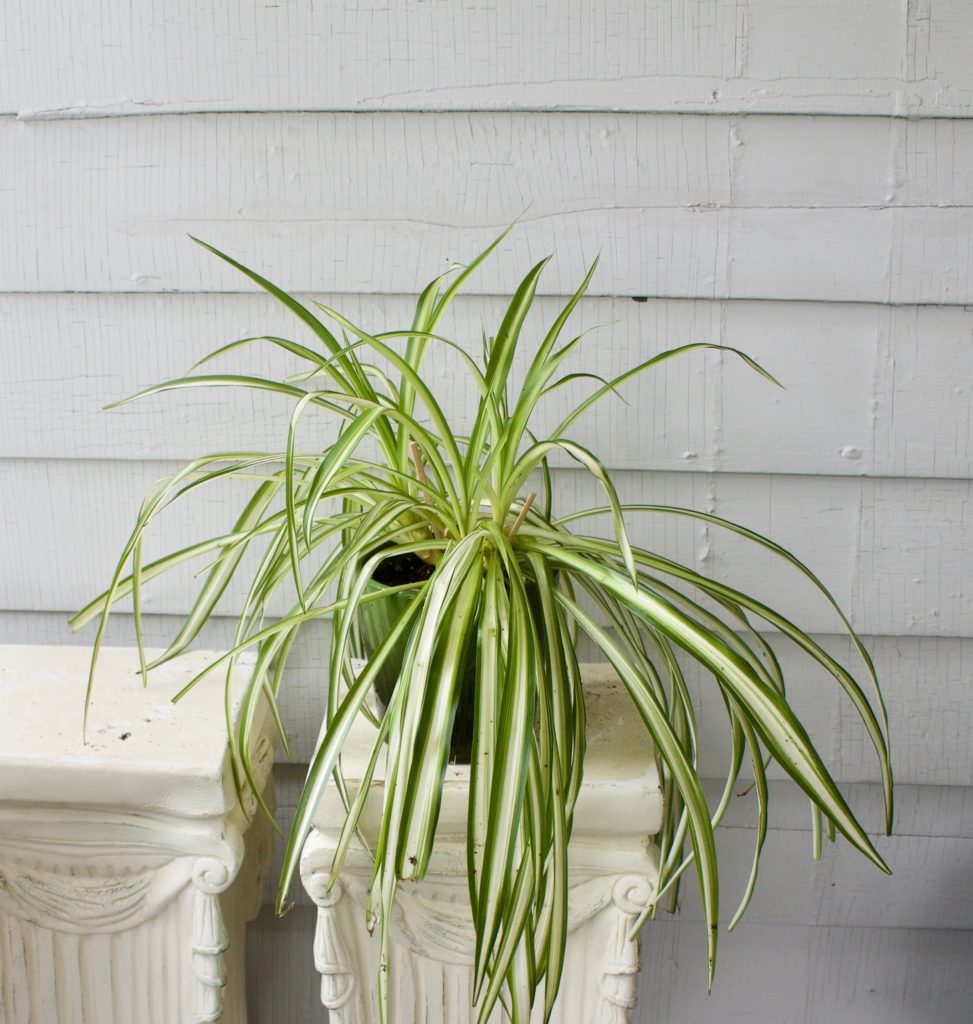
Pests: Spider plants don’t invite a lot of pests to their parties, but sometimes they can get infested with mealybugs. I have a full guide here on these devils, but what you’ll need to do is take some rubbing alcohol and saturated them. Be sure to check stems and in between leaves. Mealybugs are the worst.
Yellow Leaves: Yellow leaves on spider plants indicates overwatering. Overwatering is terrible for these guys – a sure sign you might be doing so are yellow leaves or fungus gnats.
Maybe you’re a pet parent looking for some spider plant insight or a victim of a recent spider plant cat obliteration, either way I hope I was able to provide some answers. Thanks for reading!


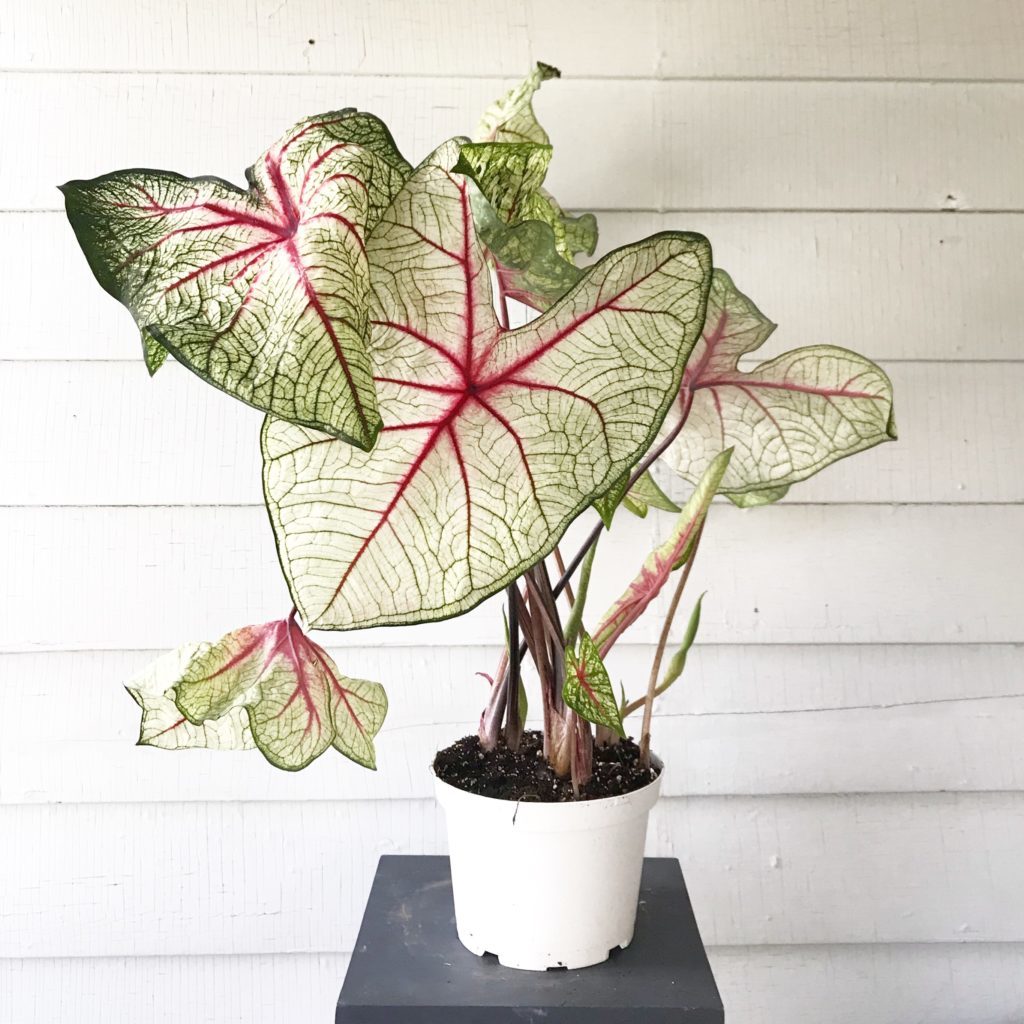
Great article! I love the progression into insanity of the pictures ?.
One of our previous cats was obsessed with dried spider plant leaves and probably ate a good mouthful daily. It didn’t appear to do her any harm and she was always playful and happy – reading this article maybe that was because she was high as a kite! Other cats we’ve had just aren’t bothered with it.
Thanks for the knowledge. I propagated three chick and hen leaves and one spider plant baby. Put it on the windowsill. Spider plant baby has disappeared and a trail of dirt is all the evidence that remains.